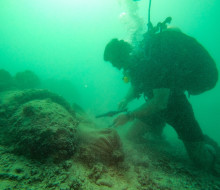
Second World War-era bombs in Vanuatu made safe by Navy divers
26 June 2024
Unfortunately you are viewing this website on an outdated browser which does not support the necessary features for us to provide an adequate experience. Please switch to a modern browser such as latest version of Google Chrome, Mozilla Firefox, Apple Safari or Microsoft Edge.
Ngā mihi nui
Working alongside Royal Australian Navy forces, disposing of Second World War bombs in Vanuatu, marching in a street parade in Tonga and surveying areas of the sea floor in Ha’apai has kept the Royal New Zealand Navy Littoral Warfare Force busy.
HMNZS Manawanui arrived back at Devonport Naval Base on Wednesday, allowing the crew to take a well-earned break after the busy deployment.
Commander Yvonne Gray has now led HMNZS Manawanui through two Operation Calypso deployments to the South West Pacific, and says the highlight of this one was completing the disposal of five 1000lb bombs located in around 20 metres of water in Port Vila harbour.
Five Maritime Explosive Ordnance Disposal (MEOD) divers from the expeditionary unit HMNZS Matataua used low order charges to crack the bombs open, filling them with sea water and rendering them safe with minimal disturbance to sea life and the reef.
“From the planning at Headquarters Joint Forces in New Zealand and at HMNZS Matataua, through to the liaison and cordon support from the Vanuatu Mobile Force, Vanuatu Police, and the Vanuatu Ports and Harbour Authority, this was an effective and efficient operation that really demonstrated the team effort between the New Zealand Defence Force and Vanuatu officials,” said Commander Gray.
Able Rating Nicole Anderson was the lead hydrographer embarked on the ship, working with HMNZS Matataua’s Survey Search and Rescue (SSR) team to complete a survey of a 41 nautical miles squared area in Ha’apai, Tonga, in just 72 hours.
“We’d been asked by the Government of Tonga to carry out the hydrographic survey, which will improve safety of navigation after the eruption of the Hunga Tonga-Hunga Ha’apai volcano and subsequent tsunami in January 2022. We were joined by two hydrographers from the Republic of Fiji Navy and one from the Tongan Royal Navy, which gave them some valuable experience and meant they were part of an important task which will benefit all Pacific nations and mariners when navigating in and around Tonga.”
The SSR and MEOD teams were just two of the deployable teams who joined HMNZS Manawanui for the operation.
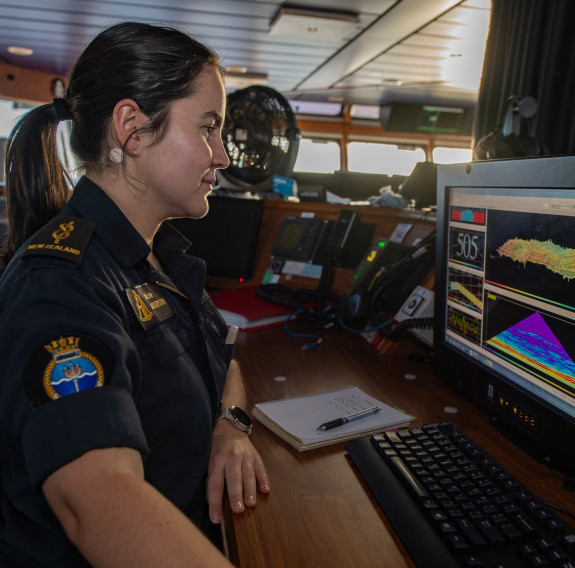
Able Rating Nicole Anderson surveys the sea floor.
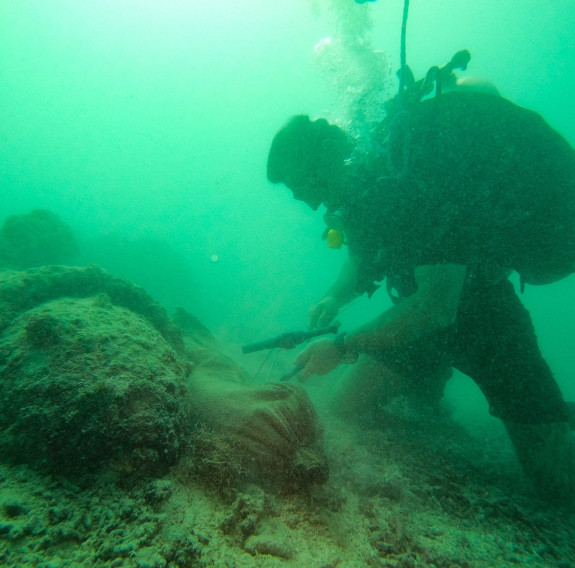
A diver places a low order charge on a 1000lb bomb dumped on the sea floor after the Second World War.
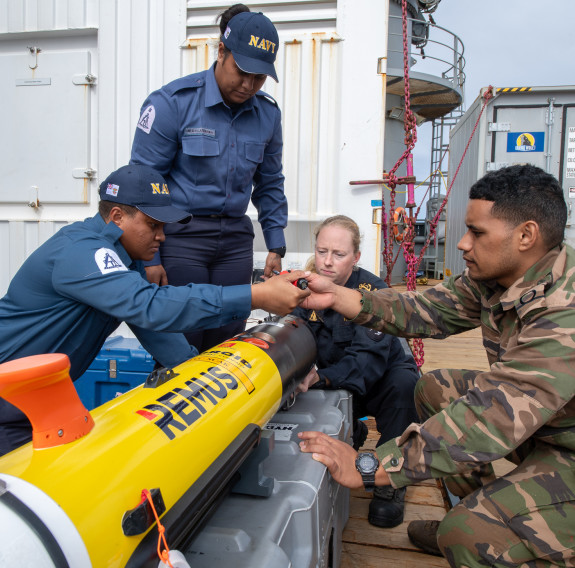
Republic of Fiji Navy and Royal Tongan Navy hydrographers assist with a Remote Environmental Monitoring Unit (REMUS).
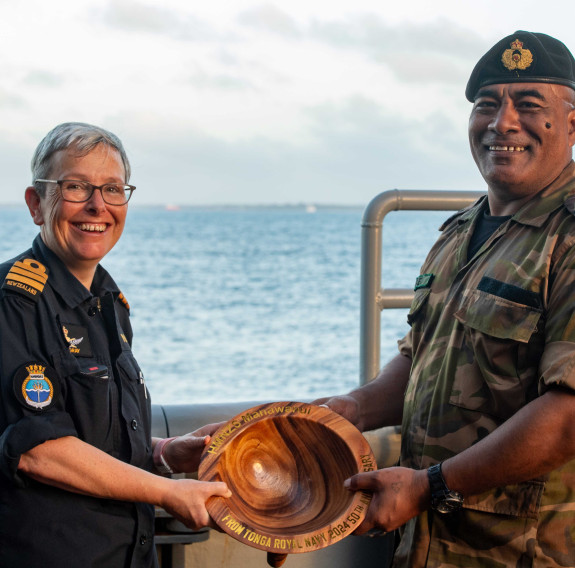
Lieutenant Commander Tala Mafile’o of the Royal Tongan Navy presents Commander Yvonne Gray with a carved wooden bowl as a memento of the RNZN’s participation in the 50th Anniversary Fleet Review.
Commander Gray said that Operation Calypso showed the value of the ‘plug and play’ dynamic between HMNZS Manawanui and HMNZS Matataua.
“At various phases of this operation, we’ve also been joined by the Mine Counter Measures team, Uncrewed Surface Vessel team and the Littoral Manoeuvre Craft crew, in order to successfully complete distinct operations. This illustrates the flexibility and significant capability that enables the Royal New Zealand Navy to conduct our tasks and helps inform what this might look like in our future fleet.”
As the ship’s crew prepares for their short break before their next task, Commander Gray reflects on the moment that made her proudest during this operation.
“During the celebrations for King Tupou VI’s birthday and the 50th Anniversary of the Royal Tongan Navy I watched the Ship’s Company interacting with sailors from other navies. They struck just the right balance of professionalism, having fun and being awesome defence diplomats.
“Operation Calypso is a special one. It gives us the opportunity to work with and for our South West Pacific neighbours, giving us the ever-important opportunity to learn from each other.”